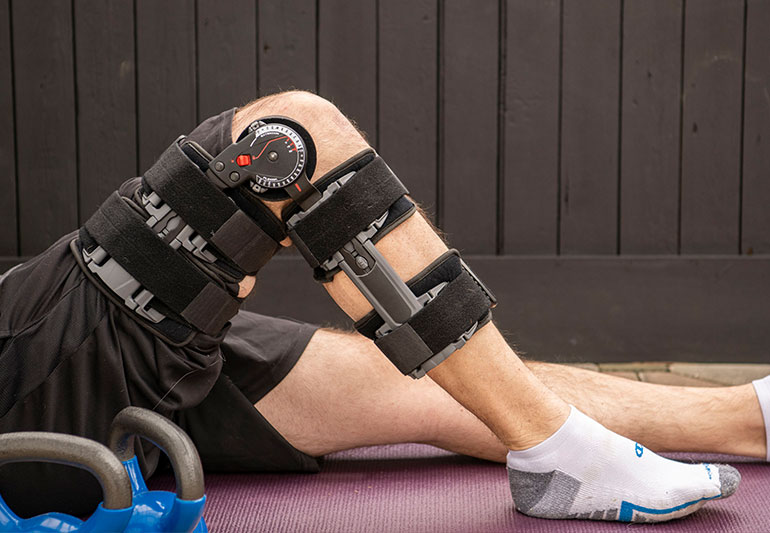In the past month, three major college athletes have been sidelined with long-term injuries. Because these young athletes play for major programs or have shown signs of greatness, their injuries have been even more prominent.
Notre Dame quarterback Tyler Buchner will miss the rest of this season due to a shoulder injury. The University of Texas also lost its starting quarterback. Texas coach Steve Sarkisian expects Quinn Ewers to miss four to six weeks with an SC sprain, an injury to the area where the sternum meets the clavicle. UConn women’s basketball star Paige Bueckers announced that she will miss the 2022-23 season after tearing her ACL in a pick-up game before the season even began.
These injuries are just a small but notable sample of the many that occur each year to young athletes. So, what impact do they have on their future, and should we be taking greater precautions?
Notre Dame Quarterback Tyler Buchner
Quarterback Tyler Buchner made headlines early as the first Chinese American to start in the role for a Power 5 level program. Unfortunately, the sophomore will now miss the remainder of what has started as a rocky season. Buchner injured his non-throwing shoulder after taking a hard hit in Notre Dame’s 26-21 loss against Marshall on September 10, 2022. The young athlete had yet to show his true potential this season, so the loss is a big one for both him and the team.
What does this mean for Buchner’s future? While it is too soon to say for certain, undergoing major surgery and missing an entire season could seriously impact his development as a player. He will likely fall behind his teammates and opponents who are able to continue playing and practicing. This could put him at a disadvantage when he tries to return next season. There is also the risk that he could reinjure himself if he comes back too soon.
University of Texas Quarterback Quinn Ewers
Texas was looking at a shocking upset of top-ranked Alabama when starting quarterback Quinn Ewers went down with an injury. While Ewers is the biggest loss to the team, two other star players, running back Bijan Robinson and corner D’Shawn Jamison, also got injured. Even backup quarterback Hudson Card left with an injury.
While none of these players will need surgery for their injuries, it’s a harsh start for a program with high expectations.
UConn Basketball Star Paige Bueckers
Bueckers made headlines early in her collegiate career as she set broke records for assists and scoring and was named the Best Female College Athlete at the ESPY Awards in 2021. She also signed a historic NIL deal with Gatorade, setting her among elite athletes who represent the brand.
However, her torn ACL this off-season is not even Bueckers’ first major injury. During her sophomore year, Bueckers fractured her knee (tibial plateau) and tore her meniscus, requiring surgery. She missed 19 games with that injury, and it took another few weeks of playing to get back to her typical level of intensity on the court. Another major injury so early in her career is raising eyebrows about Bueckers’ possible career trajectory from here.
Long-Term Impacts of Injury on Young Athletes
As these injuries pile up, it may be time to consider their long-term effects. Buchner’s chances at a full recovery are positive since his throwing arm was not impacted. Ewers will not require surgery for his injury, but risks aggravating the injury if he pushes to return to play too soon. These injuries could have long-term effects on their careers.
The most obvious impact of an injury is the time it takes to recover. This can be a significant setback for any athlete, but especially for young athletes who are still developing their skills. In Buchner’s case, he will miss an entire season of development. This also means it’s possible he’d lose his starting role if his backup performs well this season. The same is true for Ewers, who will have to regain arm strength and accuracy after his SC sprain heals.
Bueckers’ ACL tear could have long-term effects on her career, as well. She will miss an entire season of development and may never be the same player she was before the injury. And for an athlete who’s already broken records with her endorsement deals, that could have very real financial implications.
What Can Be Done to Protect College Athletes?
So what can be done to protect these athletes? There are a few things that could help. First, colleges need to do a better job of monitoring their health and providing them with the best possible care. Second, schools need to provide more support for athletes who suffer serious injuries. Lastly, we as fans need to be more understanding when our favorite players get hurt and realize that they are still young people with a lot of potential.
Injuries are a part of sports, but we should be doing more to protect college athletes from the long-term effects. Some have suggested that colleges should start paying athletes so that they can have access to better medical care. Others have proposed increasing the number of scholarships so that injured athletes can take a year off without losing their spot on the team.
Some have even suggested that we need to start paying attention to the psychological impact of injuries on young athletes. The pressure to perform can often lead to athletes pushing themselves too hard and ignoring pain until it’s too late.
It’s clear that injuries significantly impact young athletes, both physically and mentally. We need to do more to protect them from the long-term effects of these injuries.

